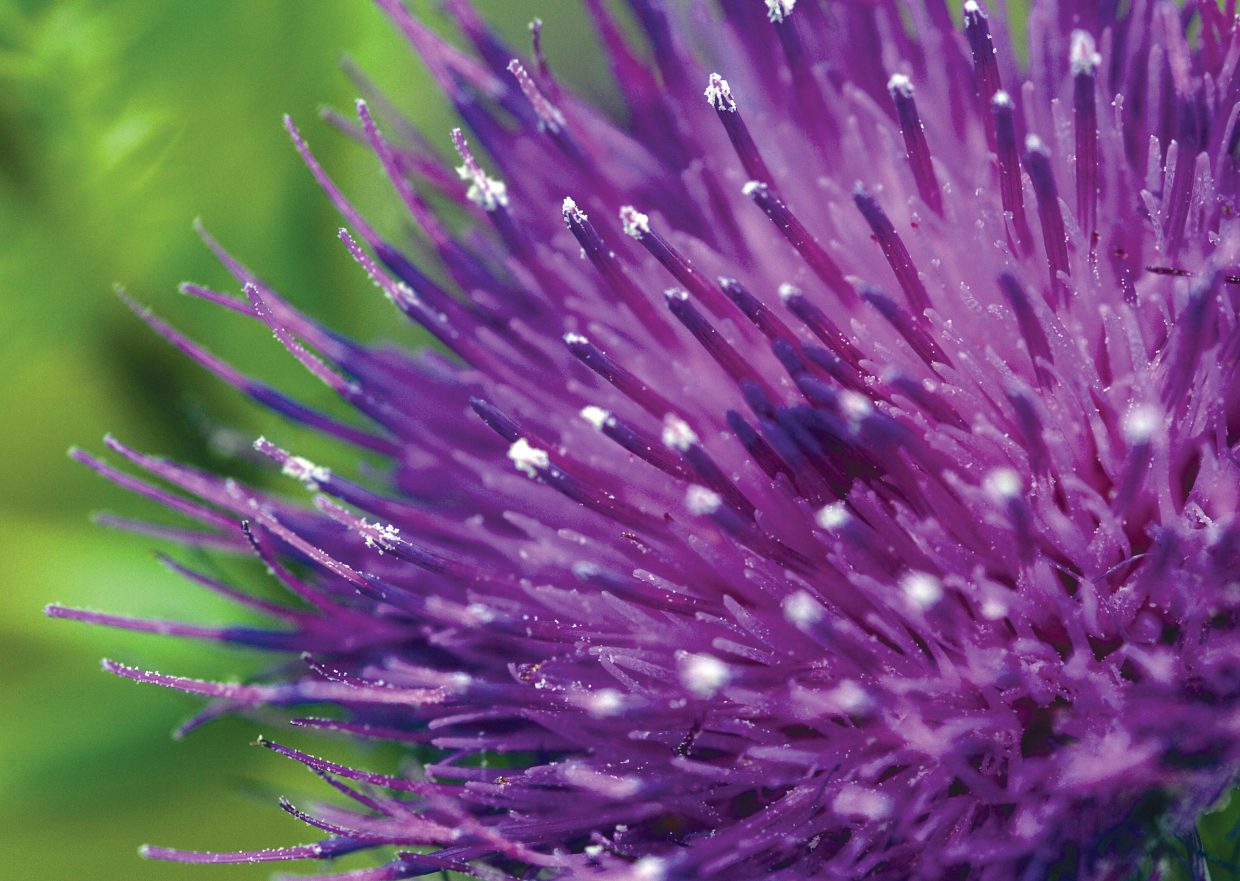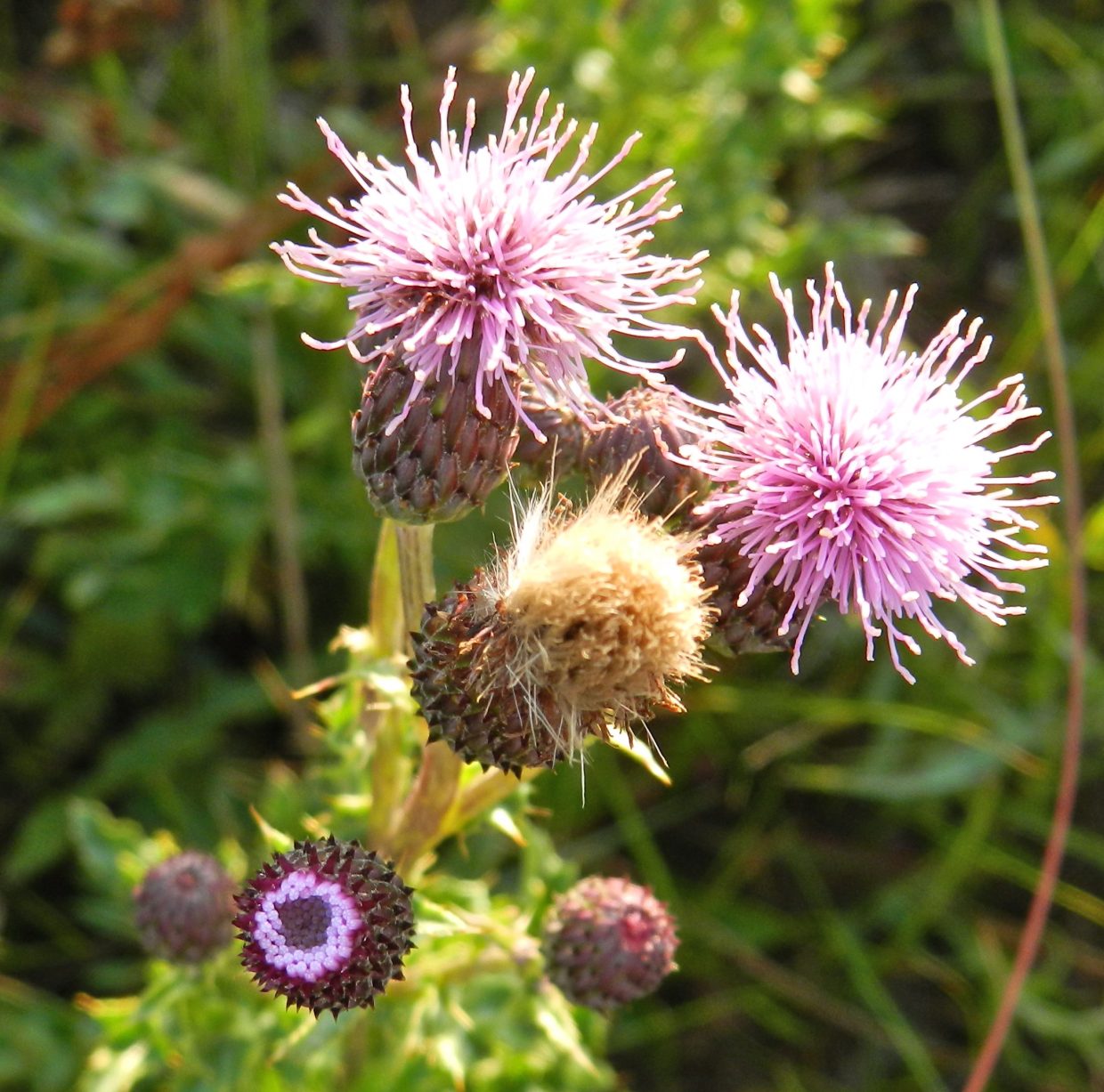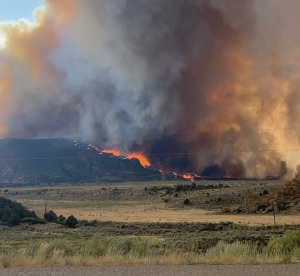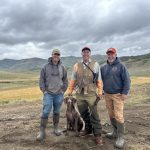CAA: Non-native thistle control in Northwest Colorado

John F. Russell/Steamboat Pilot & Today
Non-native, invasive thistles are rapidly expanding across Routt County and Northwest Colorado. These aggressive plants outcompete native vegetation, including native thistles, disrupting ecosystems and crowding out species vital to pollinators, wildlife, and livestock.
Fortunately, fall offers a prime opportunity to control their spread before winter sets in.
• Biennial thistles complete their life cycle over two years. In the first year, they form a low-growing rosette. In the second year, they bolt, flower, produce seeds, and die. This cycle allows for multiple control strategies such as digging, clipping, or spraying, especially in the fall.
• Bull thistle is one of the most common biennials in the region. Typically 12 to 24 inches tall, it can vary widely in height. Its bright pink to purple gumdrop-shaped blooms and prickly, hairy leaves make it easy to identify.
Each plant can produce up to 4,000 seeds, so digging and disposing of them in the landfill is an effective way to reduce spread. Because wind can spread the seeds for long distances, disposing of the seeds before they spread is paramount.
• Musk thistle, once rare in Routt County, is now spreading rapidly. It grows stealthily, with the rosette lying dormant early in the season, then bolting quickly in mid to late summer. Mature plants can reach several feet tall and produce up to 100 flowers, each 1.5 to 3 inches wide.
Though livestock and wildlife may eat the blooms, the seeds remain viable and can pass through digestive systems unharmed. These seeds can persist in the soil for up to 14 years and require light to germinate.
Maintaining dense grass and forb cover helps suppress growth. In fall, cut and dispose of flower heads, and avoid leaving them on the ground. Digging or spraying first-year rosettes now will reduce next year’s population.
• Scotch thistle is the newest biennial invader in Northwest Colorado. It is already prevalent in Moffat County and moving east. Its large, grayish, hairy leaves with a distinct mid-rib and violet to reddish flowers, 1 to 3 inches wide, make it easy to spot. Each plant can produce up to 100 flowers and a staggering 14,000 seeds, which remain viable for up to 30 years.

Like other biennials, cut and dispose of seed heads and treat rosettes in the fall.
• Canada thistle is a perennial with deep, spreading roots. Unlike biennials, digging is ineffective because above-ground growth represents only a fraction of the plant’s biomass.
Mowing won’t kill it, and tilling may worsen infestations. Herbicide offers the most reliable control, but often requires multiple seasons of application. Fall is a good time to treat, as plants typically regrow after seeding.
Taking time this fall to manage thistles benefits your land, local wildlife, and the broader environment. Early action now means less work next spring and a healthier landscape for years to come.
Todd Hagenbuch is the Routt County CSU Extension Director.

Support Local Journalism

Support Local Journalism
Readers around Steamboat and Routt County make the Steamboat Pilot & Today’s work possible. Your financial contribution supports our efforts to deliver quality, locally relevant journalism.
Now more than ever, your support is critical to help us keep our community informed about the evolving coronavirus pandemic and the impact it is having locally. Every contribution, however large or small, will make a difference.
Each donation will be used exclusively for the development and creation of increased news coverage.









